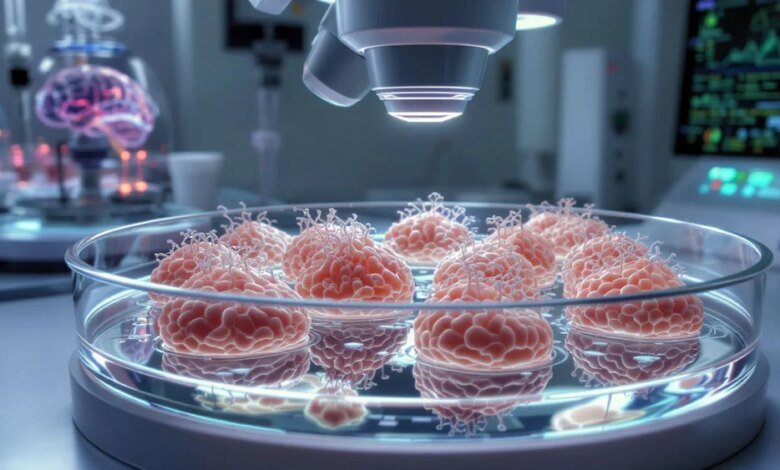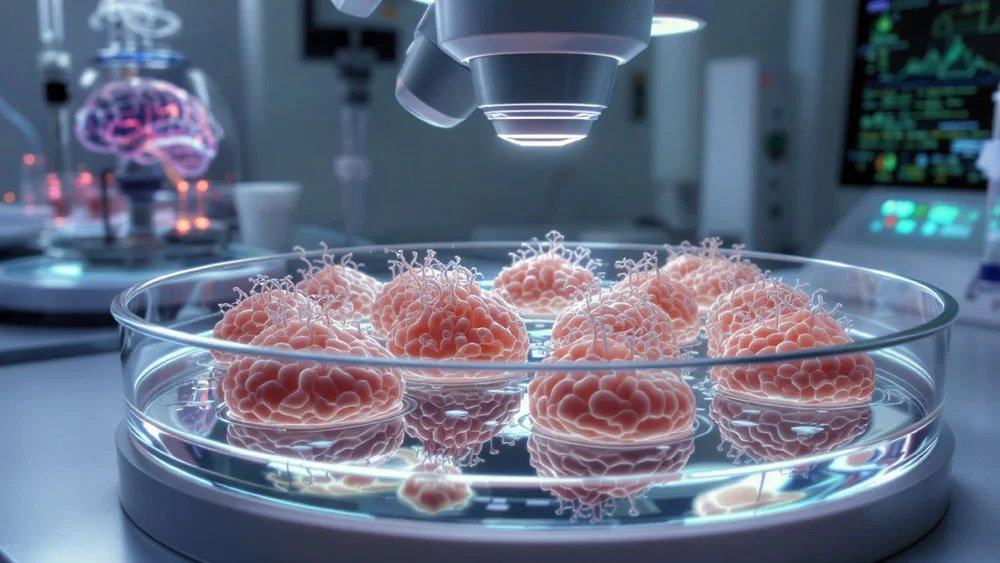The first brain model with all types of cells grown in …

The first brain model with all types of cells grown in …
uaetodaynews.com — The first brain model with all types of cells grown in the laboratory
For the first time, a model of the human brain with all types of cells has been grown in the laboratory.
Grown from stem cells at the Massachusetts Institute of Technology (MIT) multicellular integrated brain (Multicellular Integrated Brain – miBrain), which combined all the main types of brain cells, including neurons, glia and the vasculature, into one culture. It reproduces key characteristics and functions of neural tissue, is easily customizable through gene editing, and can be produced in quantities sufficient for large-scale research.
Although each sample is smaller than a ruble coin, miBrain is of enormous value to researchers and drug developers who need more complex living laboratory models to better understand brain biology and treat diseases.
“miBrain is the only system in vitrowhich contains all six major cell types present in the human brain. In its first application, it allowed us to discover how one of the most common genetic markers of Alzheimer’s disease alters cell interactions, leading to pathology,” says Professor Li-Hui Tsai from Picower Institute for Learning and Memory WITH.
Double advantage
Clearly, the more accurately a model reproduces the complexity of the brain, the better suited it is for predicting human biology and studying treatments.
Simple cultures, consisting of just one or a few types of cells, can be created in large numbers relatively easily and quickly, but they cannot tell researchers about the myriad interactions that are essential to understanding health or disease. Experiments on animals embody the complexity of the brain, but are often difficult and expensive, produce results less quickly than expected, and may not match human results.
miBrain combines the benefits of both types of models, maintaining much of the affordability and speed of cell cultures grown in the lab while allowing researchers to obtain results that more closely approximate complex human biology. over, the use of donor biomaterial personalizes the model for a specific patient.
“miBrain is an impressive scientific achievement. The trend toward fewer animal experiments in drug development makes such systems increasingly important tools for the discovery and development of new therapeutic targets in humans,” emphasizes Robert Langer, professor at the Koch Institute.
Two key combinations
Creating a successful brain model faced two major challenges that took many years to overcome. Firstly, a substrate in which the system would function successfully. The researchers took inspiration from the environment that surrounds cells in natural tissue, the extracellular matrix (ECM). miBrain’s hydrogel-based Neuromatrix mimics the brain’s ECM with a special blend of polysaccharides, proteoglycans and basement membrane that provides a scaffold for brain cells while promoting their growth and development.
Secondly, the proportions of cells. Over the past few decades, the actual ratio of cell types has remained a matter of debate, and to this day only very rough guidelines are known – for example, 45-75% for oligodendroglia of all cells or 19-40% for astrocytes.
The researchers obtained six cell types from patient-donated induced pluripotent stem cells and tested that each cultured type closely recapitulated natural brain cells. The ratio was then adjusted experimentally until the optimal one was found, which led to the formation of functional, properly structured neurovascular units. This is a very labor-intensive process, since each cell type is genetically programmed and grown separately – but in the end it turned out to be an advantage.
“miBrain’s modular architecture allows for precise control of cellular composition, genetics, and sensors, making it ideal for disease modeling and drug testing,” says Harvard Medical School’s Alice Stanton, a former postdoc in Tsai’s lab.
Photo: MIT Picower Institute/Koch Institute
Fluorescent marker staining reveals each of the six major cell types in miBrain
Discovery about Alzheimer’s disease
The capabilities of miBrain were tested by studying the genetic component of the pathogenesis of Alzheimer’s disease. It is known that the APOE4 gene variant makes the greatest contribution to the risk of developing this disorder. The APOE protein is produced by astrocytes. Experiments were carried out both on isolated astrocyte cultures and on those integrated into miBrain; their results were published in Proceedings of the National Academy of Sciences.
It turned out that the accumulation of tau protein and amyloids – markers of Alzheimer’s immune reactivity – occurs only when astrocytes work with a “defective” gene in interaction with microglia; separately, they almost do not produce harmful proteins.
In the future, the research team plans to add new features to miBrains to more accurately model the characteristics of a working brain, for example using microfluidics to add flow through blood vessels or single-cell RNA sequencing techniques to improve neuronal profiling.
But even the current version has very broad prospects. “Given its complexity and modularity, future directions are endless,” Stanton said.
Subscribe and read “Science” in
Telegram
Disclaimer: This news article has been republished exactly as it appeared on its original source, without any modification.
We do not take any responsibility for its content, which remains solely the responsibility of the original publisher.
Disclaimer: This news article has been republished exactly as it appeared on its original source, without any modification.
We do not take any responsibility for its content, which remains solely the responsibility of the original publisher.
Author: uaetodaynews
Published on: 2025-10-19 23:33:00
Source: uaetodaynews.com





